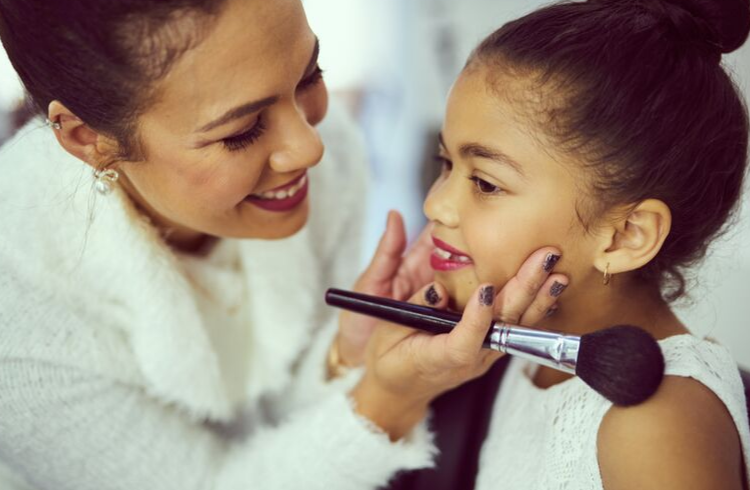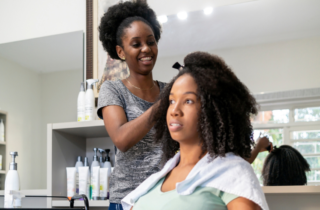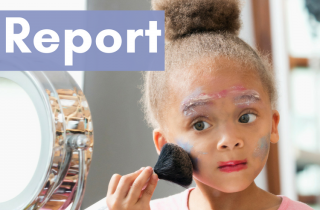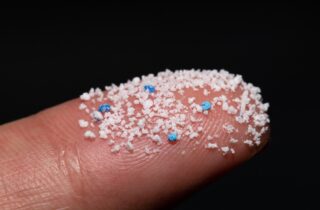Toxic-Free Beauty Act
At a Glance
The Toxic-Free Beauty Act of 2025 (HR 4433), introduced in the U.S. House of Representatives by Reps. Jan Schakowsky and Lizzie Fletcher would ban two classes of chemicals and 18 of the worst chemicals from cosmetics.
This bill would ban 18 of the most hazardous chemicals and two classes of chemicals from beauty and personal care products sold in the U.S.
Banning the worst first: CA, MD, OR, WA, VT, and the European Union already ban some or all of these chemicals from cosmetic products.
This bill is part of the Safer Beauty Bill Package, four bills that will make beauty and personal care products safer for all by banning the worst chemicals, requiring disclosure of hazardous chemicals (including fragrance ingredients), protecting women of color and salon workers, and requiring supply chain transparency.

Summary
The Toxic Free Beauty Act bans 18 of the most toxic chemicals, including mercury, parabens, lead, asbestos, and toluene, plus the classes of formaldehyde-releasing preservatives and ortho-phthalates from beauty and personal care products. The European Union, California, Washington, Oregon, Vermont, and Maryland already ban many of these chemicals, yet they are used in cosmetic products sold legally in the U.S.
Problem
Thousands of industrial chemicals are used to create the personal care and beauty products (the legal term is “cosmetics”) that consumers and professional nail, hair, and beauty salon workers use daily. Some of these chemicals have been linked to serious harm to human health and the environment, including hormone disruption, breast and other cancers, birth defects, infertility and other reproductive problems, allergies such as skin irritation, respiratory harm, and environmental damage such as toxicity to aquatic life. Women of color and professional salon workers are most at risk because of the toxic chemicals in the beauty products marketed to them or commonly found in their workplaces. Other vulnerable populations include infants and children, whose bodies are constantly undergoing sensitive periods of development, pregnant women, and the elderly.
Current Government and Retail Regulations
Many multinational companies, major retailers like Target, CVS, Walgreens, Rite Aid, and hundreds of clean cosmetic companies have voluntarily added many of these chemicals to their “Do Not Use” list of chemicals. However, other large and small companies continue to sell beauty and personal care products containing these toxic chemicals simply because they can.
Solution
The federal Toxic-Free Beauty Act builds on laws enacted in CA, MD, OR, WA, VT, and NY that banned harmful chemicals from beauty and personal care products and, in doing so, created a new high bar for cosmetic safety.
The Toxic-Free Beauty Act prohibits the intentional use of the following chemicals in both consumer beauty and personal care and professional salon products sold in the United States:
- The class of a group of ortho-phthalates, endocrine-disrupting chemicals found in nail polish and fragrance, that are linked to birth defects, breast cancer, and hormone disruption.
- They were banned by the federal Consumer Product Safety Commission in 2008 from children’s toys.
- Banned as a class from cosmetics by WA (2023), OR (2023), and VT (2024).
- Banned from IV bags and tubing in CA in 2024.
- The entire class of formaldehyde-releasing chemicals used to preserve beauty and personal products, including
- DMDM hydantoin, paraformaldehyde, and quaternium-15 which can be found in body wash, makeup, shampoo, hair gel, and other hair products, and baby shampoo. These chemicals are linked to cancer, skin irritation (allergic reactions), and respiratory harm. Even low levels of formaldehyde at 200 ppm can cause serious allergic reactions.
- The WA Department of Ecology tested 30 personal care products and found levels of formaldehyde present in the products ranged from 39.2 ppm to 1660 ppm, yet consumers would never know this.
- These chemicals were banned as a class by WA (2023) and OR (2023).
- formaldehyde and methylene glycol (2 different kinds of formaldehyde), used in hair straightening/hair smoothing products. These chemicals are linked to cancer, skin irritation, and respiratory harm. Banned in CA, MD, WA, OR, and VT.
- parabens Isobutylparaben and isopropylparaben, found in sunscreens, lotions, eyeliner, blush, hair products and intimate care wipes. Parabens are hormonally active chemicals linked to breast cancer, reproductive harm, and endocrine disruption. Banned by CA, MD, WA, OR, VT, and the EU.
- m-Phenylenediamine and o-Phenylenediamine, chemicals used in hair dye that are linked to skin sensitization, cancer, mutagenicity, and organ system toxicity. Banned by CA, MD, WA, OR, VT, and the EU.
- mercury– although banned in the U.S. except as a preservative in products around the eyes – it can still be found in skin-lightening creams, beauty and antiseptic soaps, and lotions. Mercury can negatively impact the brain and nervous system.
- styrene, its cancer-causing properties are well-established by federal and international scientific bodies. It can be present as a contaminant in nail polish, sunscreen, body wash, shampoo and eyeliner. Banned by CA, VT and the EU.
- toluene, one of the “toxic trio” in nail polishes, is linked to neurotoxicity and listed as a California Prop. 65 developmental toxicant. Banned in VT.
- cyclotetrasiloxane – commonly found in hair care and skin care products marketed to women of color, it is a hormone disrupting compound that persists in the environment and is also toxic to aquatic life. Banned by CA, VT, and the EU.
- lilial– a commonly used fragrance chemical linked to developmental harm. Banned in CA and the EU.
- triclosan and triclocarban – used in antibacterial soaps, deodorants, toothpastes, and beauty products, it is a hormone disruptor and impacts thyroid function and thyroid homeostasis. Triclosan and triclocarban were banned from use in 2016 by the FDA in over-the-counter antiseptic/antibacterial products. Both are banned in WA, OR, and VT.
- acetaldehyde – used in fragrances and linked to neurotoxicity, mutagenicity, and cancer. Banned in CA in 2023, also banned in the EU.
- vinyl acetate is listed as a carcinogen by IARC and linked to acute toxicity when inhaled. Banned in California.
The Toxic-Free Beauty Act also prohibits cosmetic products with the following contaminants:
- 1,4-dioxane – a byproduct of the ethoxylation manufacturing process used to make surfactants less harsh). It is linked to cancer by the U.S. EPA, National Toxicology Program and CA’s Prop. 65. Banned in WA, OR, VT, and NY.
- lead is present as a contaminant in color cosmetics. Considered one of the most toxic chemicals on the planet, it is linked to both cancer and brain damage. Banned by WA, OR, VT and the EU.
- asbestos – found in talc-based powders and some mineral makeup, it is linked to ovarian cancer and mesothelioma. Banned in VT, restricted in the EU.
Products containing any of these prohibited chemicals would be deemed adulterated by the FDA.[ii]
For more information, contact:
Janet Nudelman, Breast Cancer Prevention Partners, Janet@BCPP.org
[i] Food & Drug Admin., Prohibited & Restricted Ingredients, https://www.fda.gov/cosmetics/guidanceregulation/lawsregulations/ucm127406.htm.
[ii] Section 601(a) of the FDCA (21 U.S.C. § 361(a)) states that a cosmetic is deemed adulterated if it “bears or contains any poisonous or deleterious substance which may render it injurious to users under the conditions of use prescribed in the labeling thereof, or under such conditions of use as are customary or usual.”
Types: Fact Sheet





